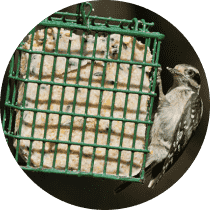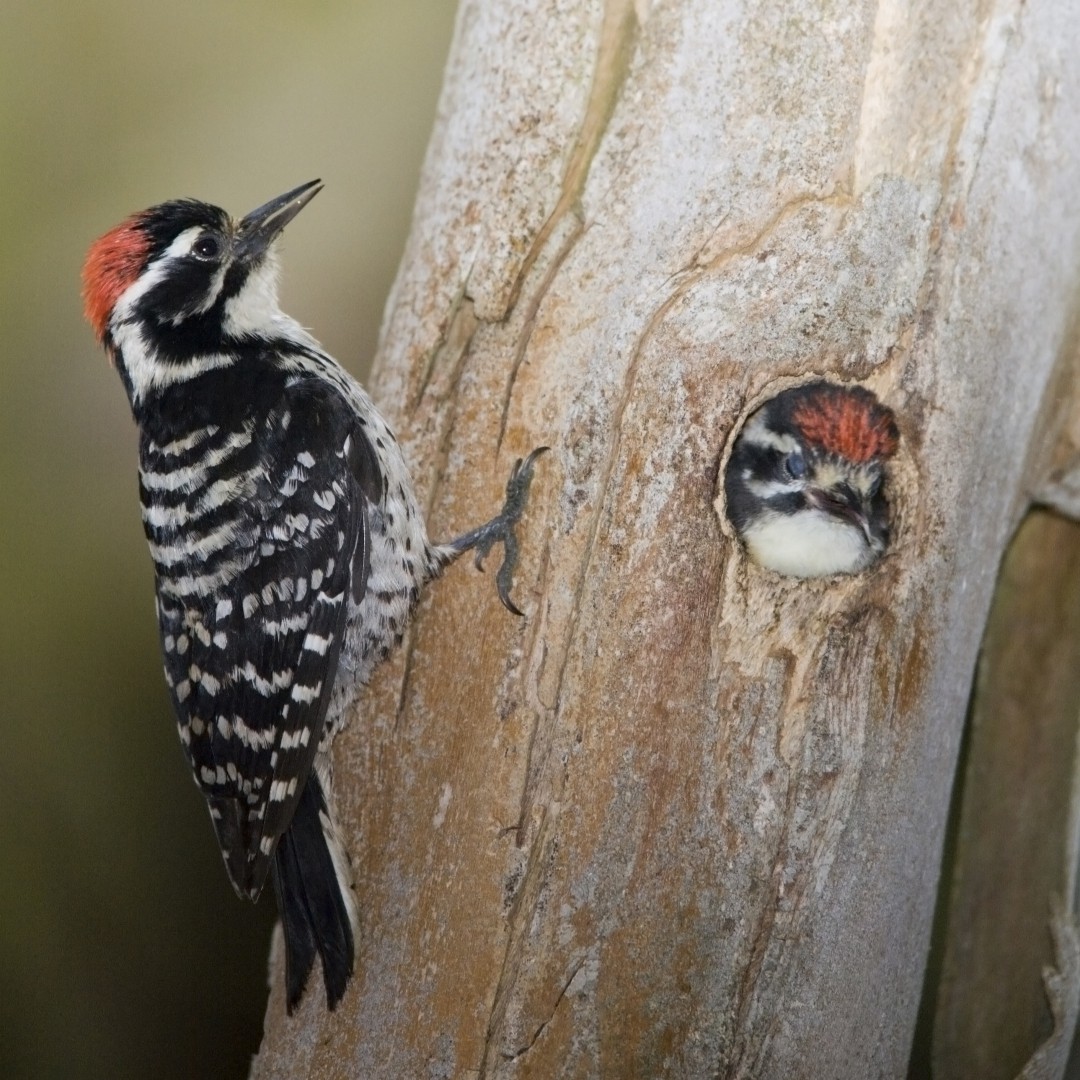Nuttall's Woodpecker
A species of Three-toed woodpeckers Scientific name : Dryobates nuttallii Genus : Three-toed woodpeckers
Nuttall's Woodpecker, A species of Three-toed woodpeckers
Botanical name: Dryobates nuttallii
Genus: Three-toed woodpeckers
Content
Description People often ask General Info
Description
Nuttall's woodpecker has black wings and tail feathers with white barring. On the ventral surface, colour is white with black spots and barring. It has a black forehead with white streaks on the sides and an unbarred black region at the top of the back. Adult males have a distinguishable red crown which females do not. However, this physical feature is present in the juvenile of both sexes. They have zygodactyl feet and stiff tail feathers which allows them to maintain a vertical position on trees; typical of woodpeckers. The mass of the Nuttall's woodpecker ranges from 30 to 45 g (1.1 to 1.6 oz), with a body length of 16 to 18 cm (6.3 to 7.1 in). 
Size
16 - 18 cm
Colors
Black
Red
White
Life Expectancy
4-11 years
Nest Placement
Cavity
Clutch Size
3 - 6 eggs
Feeding Habits
Nuttall's Woodpecker has a diet consisting mainly of insects like beetles, larvae, ants, termites, and millipedes from trees such as oaks, cottonwoods, and willows. Insect prey is obtained by probing into bark or picking off vegetation. They occasionally consume fruits like elderberries, poison oak berries, and blackberries, and ingest sap and berry seeds too.
Habitat
Nuttall's Woodpecker predominantly inhabit oak woodlands, thriving at elevations from sea level up to 1,250 m (4,100 ft), occasionally reaching 2,000 m (6,600 ft). These birds display a preference for arid to mesic environments and adapt to various woodland habitats, including riparian zones and chaparral in regions with fewer oaks. They are also known to frequent wooded suburban areas and streamside forests, especially in the southern parts of their range where oaks are less common.
Nest Behavior
Nuttall's Woodpecker males predominantly excavate the nest each year, whereafter egg-laying and biparental care of the hatchlings ensue.
Nest Characteristics
Nuttall's Woodpecker's nest is carved within dead willow, cottonwood, sycamore, oak, or alder trunks or limbs. The entrance measures approximately 2 inches and leads to an 11-inch deep cavity lined with wood chips.
Dite type
Insectivorous
People often ask
General Info
Feeding Habits
Bird food type
Bird Feeder Type

Suet Cage
Sounds
Call
Recording location: United States
Call
Recording location: United States
Drum
Recording location: United States
Behavior
Nuttall's Woodpecker exhibit typical woodpecker traits, vertically navigating tree bark as they seek sustenance. They display distinctive acrobatics, spiraling around branches and sometimes adopting a sidelong posture across limbs. Unlike their counterparts, these birds uniquely balance on slender twigs with delicate wing flutters. Couples are monogamous, occupying consistent territories, except during breeding when interaction intensifies. They ardently defend their realm with erect crests and tails and assertive wing gestures in the face of competing nuttall's Woodpecker.
Distribution Area
Nuttall's are a non-migratory species with a geographic range confined to northern California extending south towards the northwest region of Baja California, Mexico. Their preferred habitat is arid to mesic woodlands. In particular, these woodpeckers prefer oak woodlands, although they also occur in riparian sites and chaparral in the most southern parts of its range because of the decrease in oak abundance. Individuals are found from sea level to 1,250 m (4,100 ft), rarely to 2,000 m (6,600 ft). Although they have been found as far east as Central Wyoming. The birds are not considered globally threatened although the range is restricted to the California Endemic Bird Area. They are fairly common in California with a total world population estimated at over 100,000 individuals (density of about 20 birds per square kilometer in San Bernardino County). Surveys suggest no obvious population trends. 
Scientific Classification
Phylum
Chordates Class
Birds Family
Woodpeckers Genus
Three-toed woodpeckers Species
Nuttall's Woodpecker 